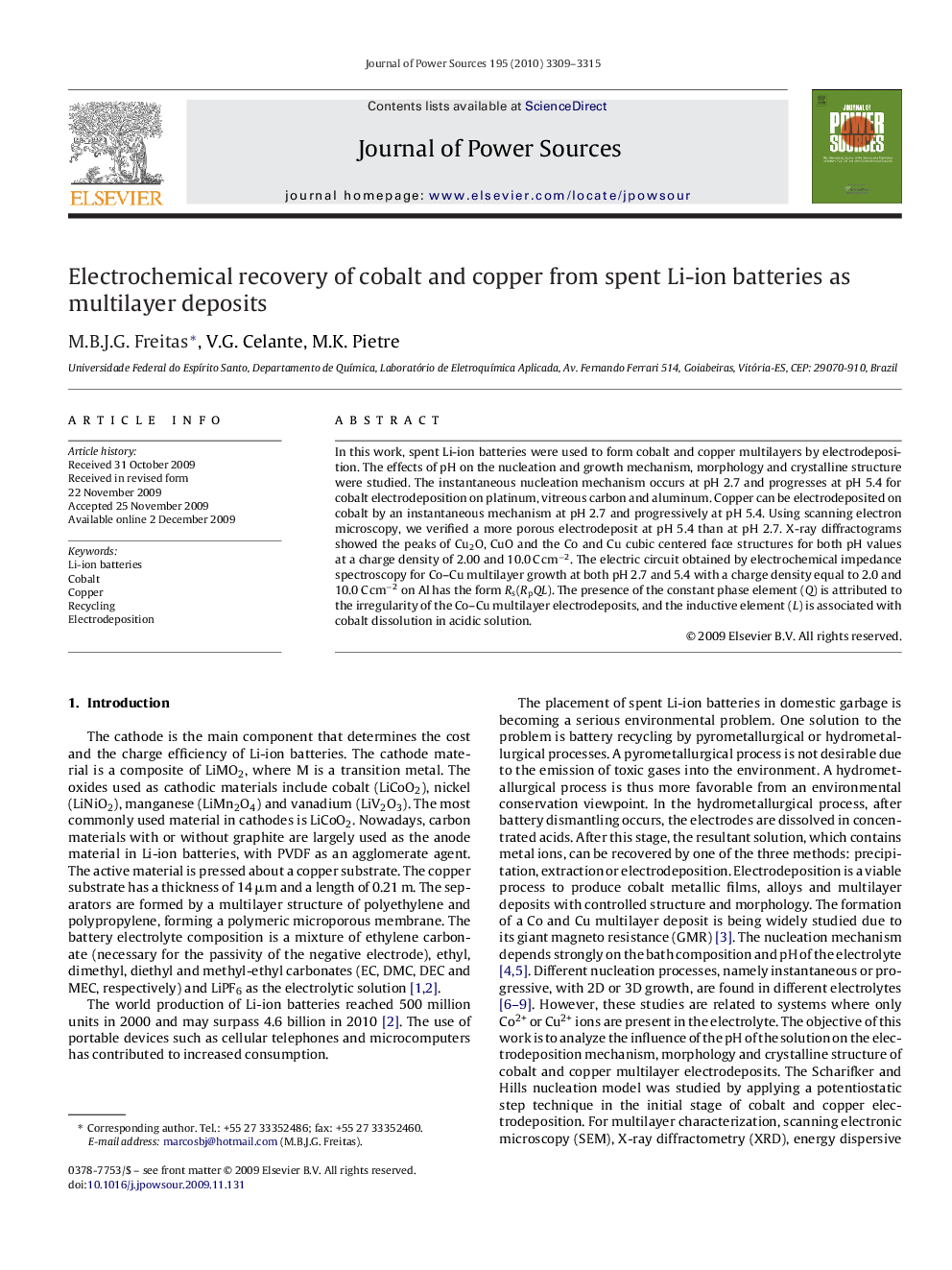| Article ID | Journal | Published Year | Pages | File Type |
|---|---|---|---|---|
| 1290526 | Journal of Power Sources | 2010 | 7 Pages |
In this work, spent Li-ion batteries were used to form cobalt and copper multilayers by electrodeposition. The effects of pH on the nucleation and growth mechanism, morphology and crystalline structure were studied. The instantaneous nucleation mechanism occurs at pH 2.7 and progresses at pH 5.4 for cobalt electrodeposition on platinum, vitreous carbon and aluminum. Copper can be electrodeposited on cobalt by an instantaneous mechanism at pH 2.7 and progressively at pH 5.4. Using scanning electron microscopy, we verified a more porous electrodeposit at pH 5.4 than at pH 2.7. X-ray diffractograms showed the peaks of Cu2O, CuO and the Co and Cu cubic centered face structures for both pH values at a charge density of 2.00 and 10.0 C cm−2. The electric circuit obtained by electrochemical impedance spectroscopy for Co–Cu multilayer growth at both pH 2.7 and 5.4 with a charge density equal to 2.0 and 10.0 C cm−2 on Al has the form Rs(RpQL). The presence of the constant phase element (Q) is attributed to the irregularity of the Co–Cu multilayer electrodeposits, and the inductive element (L) is associated with cobalt dissolution in acidic solution.
